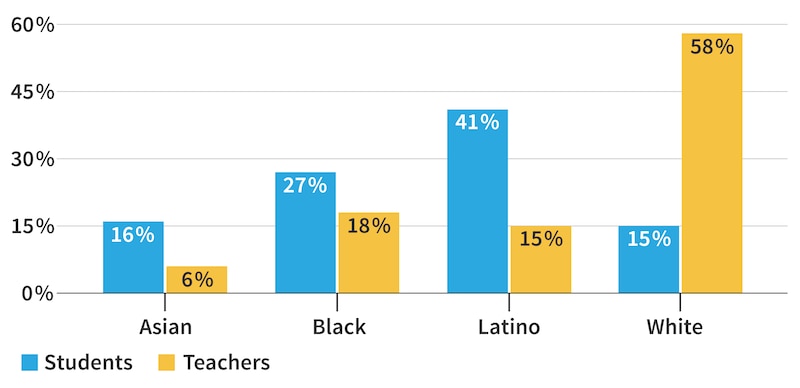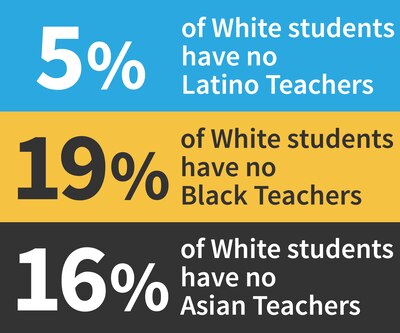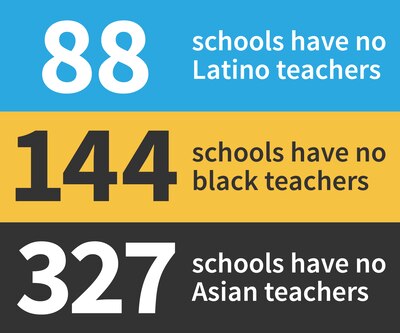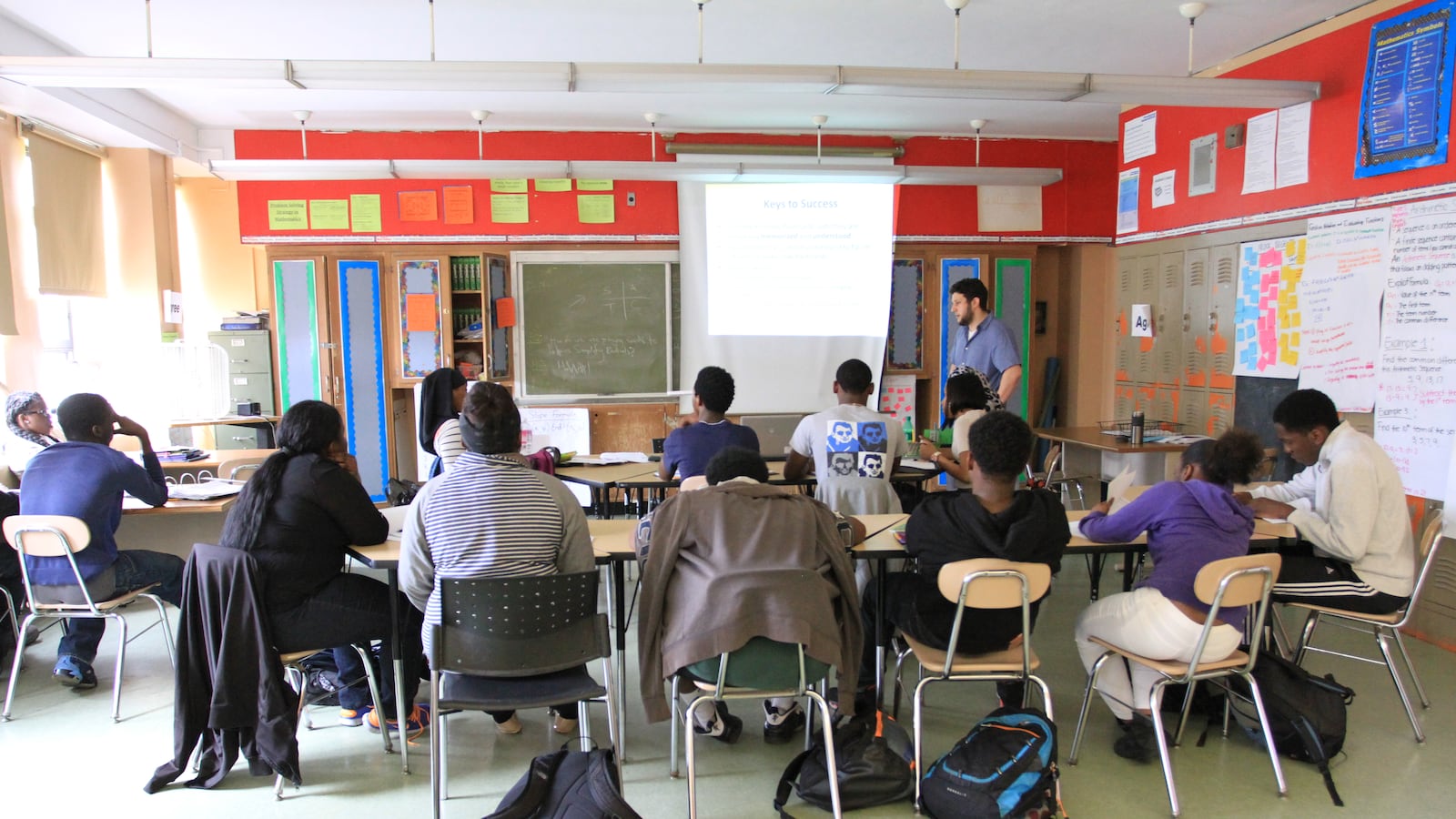Maria Siskar vividly remembers when she was in 8th grade — the grade she now teaches at Girls Prep Bronx Middle School.
She had just moved from Venezuela to Florida, but didn’t have immigration papers and couldn’t speak English. Today, many of her students can relate to her story when she tells it to them — especially those who are undocumented immigrants themselves. Will my parents be able to stay in the country? some ask her. Will I be able to attend college?
“My own role of being Latina, it has helped me make more of a connection with my girls,” Siskar said. “They see me as one of them.”
Siskar’s bond with her students is backed by research: While students of color can develop deep ties with any teacher, there is evidence that having a teacher who resembles them can help improve their test scores, provide them a role model, and raise expectations of what they can accomplish.
Yet in New York City, as in districts across the country, there is a glaring disconnect between many students’ race or ethnicity and their teachers’: While 83 percent of New York City students are Asian, black or Latino, only 39 percent of teachers are, according to 2015-16 state data compiled by Education Trust-New York, an advocacy group that tries to improve outcomes for students of color. (Education Trust and Chalkbeat both receive funding from the Gates Foundation.)
“We know from powerful national research the importance of an educator workforce that is highly skilled, well-prepared, and diverse,” said Ian Rosenblum, the group’s executive director.
Below are five big takeaways from the data, along with a searchable database of student and teacher demographics in each of the city’s 32 community districts and every borough.

1.) The biggest gap is between Latino students and teachers.
As the share of Latino and Asian students in New York City has climbed in recent decades, the number of teachers from those groups has not kept up.
According to the analysis, 41 percent of city students are Latino while only 15 of teachers are — a 26 percentage-point gap. By contrast, the black student-teacher gap is 9 points and the Asian gap is 10 points.
This phenomenon holds across all five boroughs. In Brooklyn, the Bronx, and Manhattan, the share of Latino students is more than double that of teachers; in Queens and Staten Island, there are three times more Latino students than teachers.
2.) A striking number of schools have no Asian, black, or Latino teachers.
If teachers of color are underrepresented across the school system, certain groups are not represented at all at scores of schools.
A full 88 schools (6 percent) have no Latino teachers, 144 schools (9 percent) lack a single black teacher, and 327 schools (21 percent) have zero Asian teachers on staff.
3.) White students miss out on educator diversity too

White students are especially likely to learn in schools without any non-white teachers — further isolating students who may already have limited exposure to students of different races.
Five percent of white students attend schools without any Latino teachers, 19 percent have no black teachers, and 16 percent have no Asian teachers.
Without teacher diversity, white students — like their non-white peers — may be ill-equipped to enter increasingly diverse workplaces, said Rosenblum of EdTrust-NY.
“It’s important that all students see people of color in positions of authority,” he said. “Especially if you think about the fact that there are so many highly segregated schools where students may not interact with many peers of other races or ethnicities.”
4.) Charter schools have a higher share of teachers of color, but a larger gap student-teacher gap.
For charter schools, there’s good and bad news.
On the plus side, charter schools have a slightly higher percentage of non-white teachers (43%) than district schools (39%).
However, because charter schools overall serve a higher share of students of color, the gap between their teaching force and students is larger: 94 percent of charter school students are Asian, black or Latino, while just 43 percent of their teachers are non-white — a 51 percentage-point gap.
5.) Some districts have many Asian students but few Asian teachers.

Along with Latinos, Asians are one of the city’s fastest-growing student groups. While the share of black and white students has declined since 1990, the share of Asian students has doubled, to 16 percent.
Yet — as with Latinos — the teaching force does not reflect this change. Today, Asians make up a large share of students in parts of the city, yet they see few teachers who look like them.
Take two districts in Queens: District 25 in North Queens and District 26 located on the edge of Nassau County. While about half the students in each district are Asian, only 11 percent of teachers are. Similar disparities exist in other areas of the city, like in Brooklyn’s District 20.
Use the tool below to find the percentage of students and teachers in your district and borough broken down by race/ethnicity. You can also see the citywide rates, and the rates for district and charter schools.

